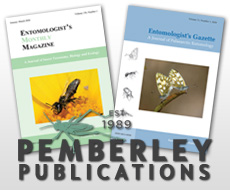The English-Mans Treasure. With the true Anatomie of Mans Body
- Collection : Prof. A.J. Cave's Library
- Publisher : Printed by B. Alsop and Tho. Favvcet
- Published In : London
- Illustrations : engraved frontispiece and one full-page text engraving
Description:
Also the Rare Treasure of the English Bathes: written by William Turner…Gathered and set forth for the benefit and Cure of the Poorer sort of people …by William Bremer. .. And now ninthly augmented, corrected and enlarged with almost a thousand approved Waters and Medicines…by W[illiam] B[oraston].
9th edition. No date (Wellcome Library states 1641).
Thomas Vicary (c. 1490-1561) was an early English physician, surgeon and anatomist. The title page states he was sergeant-surgeon to the Royal Household serving King Henry VIII, Edward VI, Queen Mary and Elizabeth I. In 1546, he was appointed the first superintendent of St Bartholomew's Hospital, London.
First printed in 1577, the work ‘appears to be based largely on a medieval English compilation dating from 1392’ (Krivatsy, P. 1989); A Catalogue of Seventeenth century printed books in the National Library of Medicine states for the 9th edition (12392) 'Vicary's anatomical treatise p. 1-57 is word by word reprint of the 1613 edition'.
Provenance: This copy has a remarkable provenance, having passed through the hands of six named individuals of which five were notable surgeons. Owners included:
1) Signature of Robert Smith [Beeston ?].
2) John Heaviside (d 1828) was a English surgeon. He was an army surgeon in the Grenadier Guards and became surgeon extraordinary to King George III. He was elected to the Royal Society in 1797. After inheriting a fortune from his father, he bought a house in Hanover Square and the medical collection of the surgeon Henry Watson. His house, at 14 George Street, became a celebrated anatomical museum, and Heaviside published a catalogue of his medical collection in 1818.
However, his reputation greatly suffered when he attended a duel between a Lt Colonel Montgomery and a Captain Macnamara R.N. which resulted from a quarrel over a dog. Montgomery was killed and Macnamara was badly wounded. Heaviside was charged with 'aiding and abetting a murder' but was later acquitted. A wit famously quipped 'can we never have a suicide or a homicide without a Heaviside?' After his death his museum collection was sold at auction.
3) Thomas Edward Eden (1790-1870). Educated at Guy's Hospital he was admitted as a member of the Royal College of Surgeons of London in 1835 and practiced in Brighton. In May 1863 he became a Fellow of the Royal College of Surgeons. Eden visited the west coast of southern Africa to investigate its guano deposits and published the results in, The search for nitre, and the true nature of guano, being an account of a voyage to the south-west coast of Africa, 1846.
4) Henry Hucks Gibbs (1819-1907) was a noted bibliophile, his extensive personal library was sold at auction in 1937. He joined the family firm, Antony Gibbs & Sons of London, which became very profitable based on an exclusive concession on Peruvian guano, and also developed merchant banking activities. Gibbs became a leading figure of the City of London, serving as director of the Bank of England and its Governor. In 1896 he was elevated to the peerage with the title 1st Baron Aldenham. He lived for while at St. Dunstan's in Regent's Park, London. With his signature and bookplate, Aldenham House, Herts. Note in pencil ‘bought of Ridler’, assumed to be William Ridler (fl.1877-1904), bookseller, 45 Booksellers Row, The Strand, London.
5) Book label of Frederic Wood Jones FRS (1879-1954), embryologist, anatomist and anthropologist. In 1904 he became a member of the Royal College of Surgeons; he was made a fellow in 1930. He taught anatomy in a number of London medical schools and was later offered the chair of anatomy at the University of Adelaide and then at Melbourne. On returning to England he accepted the chair of anatomy in Manchester. In 1945, he was appointed Sir William H. Collins professor of human and comparative anatomy and conservator of the anatomical museum at the Royal College of Surgeons of England.
6) Alexander James Edward Cave FRCS FLS (1900-2001) eminent British anatomist. Cave was Professor of Anatomy, St. Bartholomew's Hospital Medical College, 1946-1967 and President of the Linnean Society 1970-1973. Cave had a wide range of interests, as a devote Catholic he conducted examinations on a number of saint’s relics, published works on the rhinoceros, and studied the bodies of Egyptian mummies. With his pencil signature.
Condition
Small 4to, contemporary full leather boards, recently rebacked, new endpapers. Small repair to frontis. Lacking leaf Cc1-2 (pp. 195-198).
Other titles from the collection : Prof. A.J. Cave's Library
Click to view all titles in this collection...
Observations in Myology, including the myology of Cryptobranch, Lepidosiren,
Humphry, George Murray
Price £120.00
The Little Flowers of St. Francis; The Mirror of Perfection; The Life of St.
St. Francis of Assisi
Price £10.00









